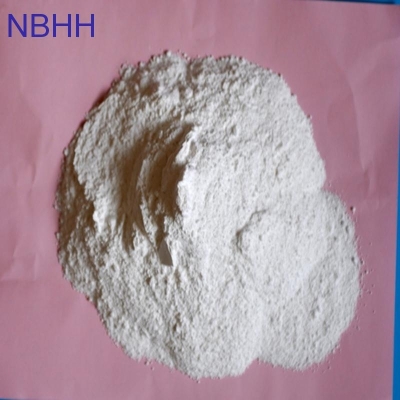-
Categories
-
Pharmaceutical Intermediates
-
Active Pharmaceutical Ingredients
-
Food Additives
- Industrial Coatings
- Agrochemicals
- Dyes and Pigments
- Surfactant
- Flavors and Fragrances
- Chemical Reagents
- Catalyst and Auxiliary
- Natural Products
- Inorganic Chemistry
-
Organic Chemistry
-
Biochemical Engineering
- Analytical Chemistry
-
Cosmetic Ingredient
- Water Treatment Chemical
-
Pharmaceutical Intermediates
Promotion
ECHEMI Mall
Wholesale
Weekly Price
Exhibition
News
-
Trade Service
Postprandial hyperglycemia (postprandial hyperglycemia) plays a key role in the induction and development of serious complications of diabetes.
It is an important factor causing vascular endothelial damage in patients with type II diabetes and an independent risk factor for death from cardiovascular disease.
Distributed in the human small intestinal brush border α- foodmate.
net/tag_1417.
html" class="zdbq" title="Glucose related food information" target="_blank">glucose glycoside enzyme (α-glucosidase) is a key enzyme in the regulation of food sources of glucose, the enzyme is inhibited to delay the digestion of food effectively reduce postprandial hyperglycemia.
At present, there are three α-glucosidase inhibitors (α-glucosidase inhibitor) hypoglycemic drugs in clinical practice.
This drug does not cause weight gain and hypoglycemia in patients, and has a mild hypoglycemic effect, which is used to control postprandial hyperglycemia.
Good choice.
It is an important factor causing vascular endothelial damage in patients with type II diabetes and an independent risk factor for death from cardiovascular disease.
Distributed in the human small intestinal brush border α- foodmate.
net/tag_1417.
html" class="zdbq" title="Glucose related food information" target="_blank">glucose glycoside enzyme (α-glucosidase) is a key enzyme in the regulation of food sources of glucose, the enzyme is inhibited to delay the digestion of food effectively reduce postprandial hyperglycemia.
At present, there are three α-glucosidase inhibitors (α-glucosidase inhibitor) hypoglycemic drugs in clinical practice.
This drug does not cause weight gain and hypoglycemia in patients, and has a mild hypoglycemic effect, which is used to control postprandial hyperglycemia.
Good choice.
However, gastrointestinal adverse reactions such as flatulence, abdominal pain and diarrhea have led to poor patient compliance, limiting its long-term use.
At present, it is believed that the main reason for the adverse reactions of such drugs is the low selectivity of digestive enzymes.
While inhibiting α-glucosidase, it also inhibits α-amylase, allowing undigested starch and oligosaccharides to enter the large intestine.
The decomposition of the corresponding intestinal microorganisms produces short-chain fatty acids such as acetic acid and lactic acid, resulting in a decrease in the intestinal pH value and an increase in osmotic pressure, thereby causing diarrhea; and the carbon dioxide and hydrogen produced by the reaction can cause abdominal distension.
With the continuous growth of the diabetic population, the demand for α-glucosidase inhibitor drugs is increasing.
Therefore, the development of safer and more effective such hypoglycemic drugs still has high clinical demand and social significance.
At present, it is believed that the main reason for the adverse reactions of such drugs is the low selectivity of digestive enzymes.
While inhibiting α-glucosidase, it also inhibits α-amylase, allowing undigested starch and oligosaccharides to enter the large intestine.
The decomposition of the corresponding intestinal microorganisms produces short-chain fatty acids such as acetic acid and lactic acid, resulting in a decrease in the intestinal pH value and an increase in osmotic pressure, thereby causing diarrhea; and the carbon dioxide and hydrogen produced by the reaction can cause abdominal distension.
With the continuous growth of the diabetic population, the demand for α-glucosidase inhibitor drugs is increasing.
Therefore, the development of safer and more effective such hypoglycemic drugs still has high clinical demand and social significance.
The natural product research team of the Institute foodmate.
net/tag_4784.
html" class="zdbq" title="Bioengineering related food information" target="_blank">of Bioengineering , Guangdong Academy foodmate.
net/tag_4784.
html" class="zdbq" title="Bioengineering related food information" target="_blank">of Sciences identified a number of compounds with α-glucosidase inhibitory activity from the Dai medicine Hipomorpha cardamom.
In particular, the haldinane-type diterpene components zerumin and ottensinin not only showed significant inhibitory activity on α-glucosidase, but also showed good selectivity.
Their effects on inhibiting α-glucosidase in vitro and reducing postprandial hyperglycemia in vivo are equivalent to the clinical drug acarbose, but their inhibitory effect on α-amylase is significantly lower than that of acarbose, indicating that these two compounds While controlling the fluctuation of blood glucose after meals, the probability of causing intestinal adverse reactions is reduced, which is expected to overcome the limitations of the clinical application of acarbose.
net/tag_4784.
html" class="zdbq" title="Bioengineering related food information" target="_blank">of Bioengineering , Guangdong Academy foodmate.
net/tag_4784.
html" class="zdbq" title="Bioengineering related food information" target="_blank">of Sciences identified a number of compounds with α-glucosidase inhibitory activity from the Dai medicine Hipomorpha cardamom.
In particular, the haldinane-type diterpene components zerumin and ottensinin not only showed significant inhibitory activity on α-glucosidase, but also showed good selectivity.
Their effects on inhibiting α-glucosidase in vitro and reducing postprandial hyperglycemia in vivo are equivalent to the clinical drug acarbose, but their inhibitory effect on α-amylase is significantly lower than that of acarbose, indicating that these two compounds While controlling the fluctuation of blood glucose after meals, the probability of causing intestinal adverse reactions is reduced, which is expected to overcome the limitations of the clinical application of acarbose.
Related research results "Anti-hyperglycaemic effect of labdane diterpenes isolated from the rhizome of Amomum maximum Roxb.
, an edible plant in Southeast China" were published in Natural Product Research, an authoritative journal in the field of natural products.
Associate researcher Lu Chuanli is the first author of this article.
Professor Junjia Chen is the corresponding author of this article.
In addition, related research results have applied for two invention patents.
This work was supported by a special fund project of the National Natural Science Foundation of China and the Guangdong Academy of Sciences.
, an edible plant in Southeast China" were published in Natural Product Research, an authoritative journal in the field of natural products.
Associate researcher Lu Chuanli is the first author of this article.
Professor Junjia Chen is the corresponding author of this article.
In addition, related research results have applied for two invention patents.
This work was supported by a special fund project of the National Natural Science Foundation of China and the Guangdong Academy of Sciences.
Link to the paper: https://doi.
org/10.
1080/14786419.
2021.
1903006
org/10.
1080/14786419.
2021.
1903006







